Source: Museum of Vancouver.
Defining Tribal Sovereignty and Indigenous Sovereignty
Believe it or not, the term “tribal sovereignty” comes from a legal origin. It refers to the recognition of the sovereignty, or independence, of the American Indian Nations within the United States, and was created through the Federal Indian Law. Tribal sovereignty gives reservations the power to self-govern, create laws, tax themselves, and uphold their own judicial system. This designation also comes with significant drawbacks however—namely, general programs created by the United States to address healthcare, housing, and clean water don’t apply to reservations unless they are mentioned in a specific provision. It’s also important to note that this designation is not what gives these nations power or the right to exist. Rather, it’s an acknowledgement of the rights that already did and continue to exist.
On the other hand, the term “indigenous sovereignty” comes from and is defined by indigenous people themselves. It exists outside of outside nation-state dominion, and has more to do with the traditional knowledge that makes each individual tribe, First Nation, or indigenous community who they are. Nation-states can attack indigenous sovereignty even if they don’t break tribal sovereignty laws. For example, the lack of care of Missing and Murdered Indigenous Women and Peoples is a dehumanization of indigenous people and therefore an attack on their ways of being, even though it’s not explicitly illegal under U.S. law, for example. The same goes for disrupting food supply to indigenous communities, mining fossil fuels on their land, or other forms of harm. Protecting indigenous sovereignty, therefore, does so much more than affirm the right of these nations to exist—it allows them to keep their culture alive.
How Does Fashion Connect to Indigenous Sovereignty?
There are 574 federally recognized first nations within the United States, and each has a unique fashion and style. Authentic native fashion contributes to Native change, while also advancing economic development through fashion. Indigenous nations create primarily sustainable and affordable clothing, actively giving back to the environment, but they also embed their customs and traditions into their designs, keeping them alive for generations. Through their clothes, they ground their knowledge, ways of life, and storytelling in an active resistance to attempts to disrupt indigenous sovereignty. The Native Governance Center has a fascinating talk that goes into more detail about this.
Significant Developments in Indigenous Fashion
The Western world has always been in love with indigenous fashion and design, but they haven’t always known it as indigenous, either because its cultural origins have been erased, or the designs themselves were appropriated. Anyone who was old enough to pick out their clothes in the late 2000s or early 2010s remembers seeing Minnetonka moccasins everywhere. However, it’s not widely known that that company was not created by indigenous people, and spent decades profiting off of indigenous-based designs before more recently taking steps to make amends to the community it took advantage of.
However, native fashion has found itself under the spotlight these past few years—not through any other name or guise, but authentically and explicitly there. Here are some cultural moments that stand out:
Native Fashion Week
In 2024, the first ever Native Fashion Week was held in Santa Fe, NM. In 2025, they expanded to have their main runway show again in Santa Fe, but they also held a Native Fashion Night in St. Paul, MN. Both shows reigned in huge success. They had 30 designers and 150 models, and were noticed by VOGUE, Forbes, Fashionista, and more. More importantly, they reminded the world of their power and presence, resituating native fashion at the center of global fashion consciousness.
Nike’s N7 Collection
The N7 Collection by Nike is self-described as “a celebration of indigenous identity through sport.” This entirely genderless collection includes the beloved Dunks model made with sustainable materials, a hoodie, shorts, a crewneck, and Nike AirMax as well. Through the N7 fund, Nike donates $625,000 annually to grants that support indigenous youth’s participation in sports.
Quannah Chasinghorse at the Met Gala
The first Met Gala that Quannah Chasinghorse attended was in 2021, when she was only 19 years old. She wore a beautiful flowing gold dress, coupled with turquoise and silver stacked accents calling back to her ties to the Navajo tribe. Much of the jewelry was sourced by her own aunt. Every year since, she’s been invited back, and every year since, she’s outdone herself.
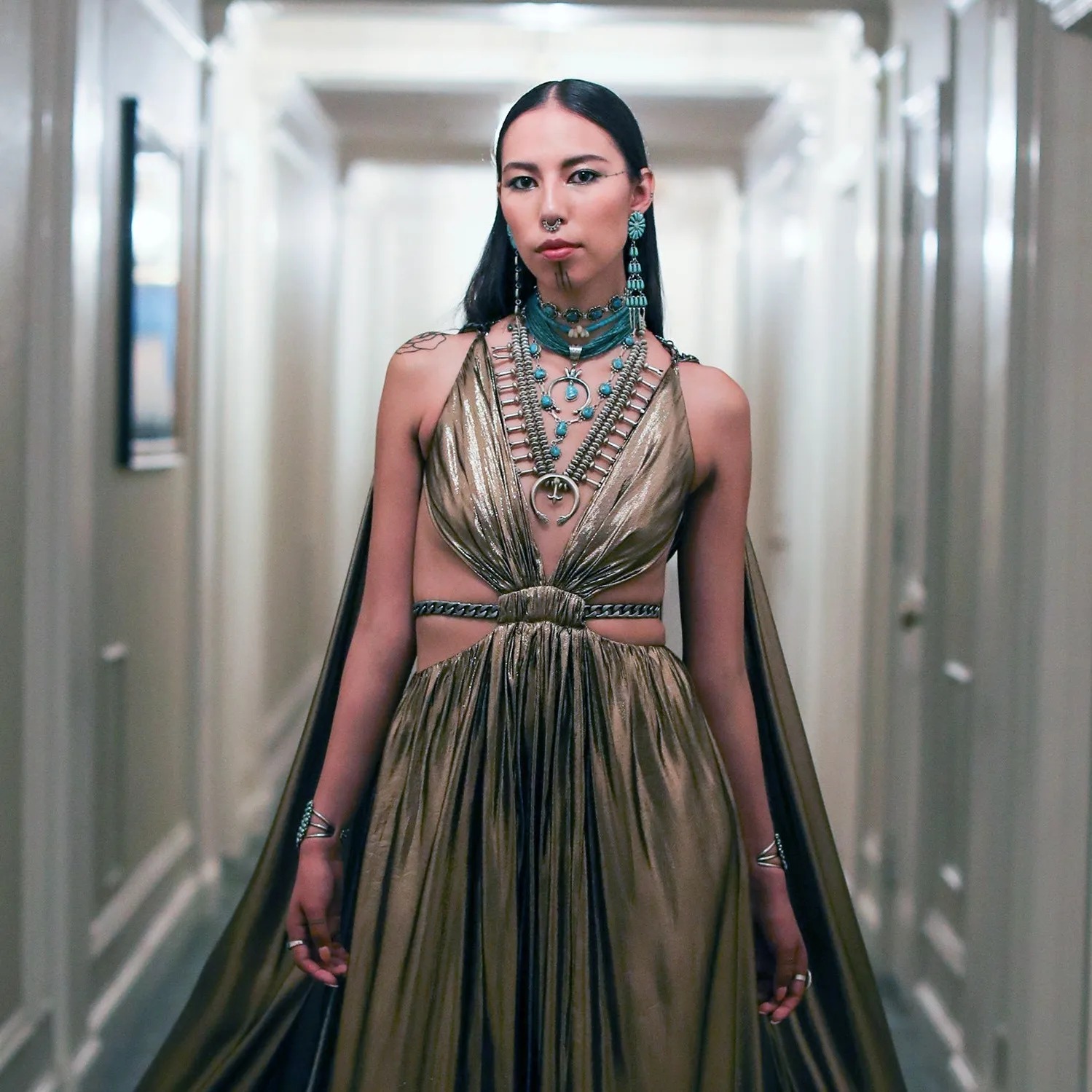
Source: Vogue
These Indigenous Fashion Designers Are Creating Real Change Through Their Work
1. Dorothy Grant
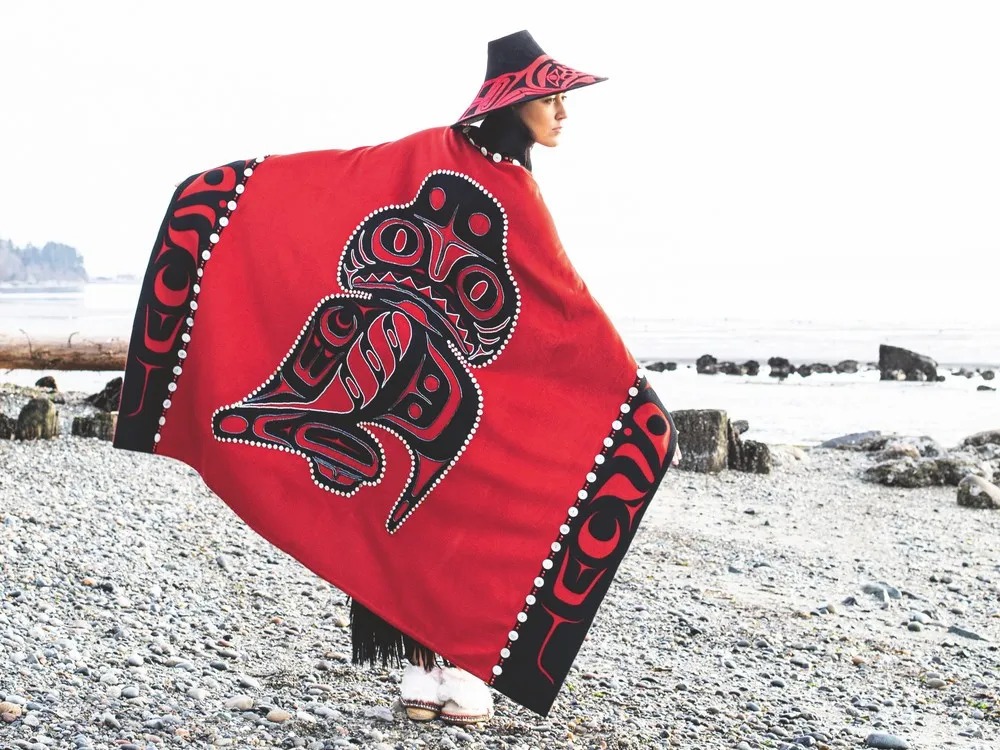
Source: Vancouver Sun
One of the more famous designers on this list, Dorothy Grant has been involved in the indigenous and broader fashion scenes since the 1980s. Her work combines traditional Haida philosophy with fashion. In particular, she focuses on the Haida word “Yaagudaang,” which means “respect of one’s self.” Her work has won her countless awards and features in news and museums, but still, she stays grounded. In 2010, she led a protest against large manufacturers copying aboriginal designers, for example.
2. Evan Ducharme

Source: Suites Culturelles
Evan Ducharme is a Canadian women’s clothing designer whose primary focus is on exploring his Métis heritage. He became interested in women’s clothing after growing up in a family of dressmakers, and saw that as the perfect opportunity to portray modern indigenous culture. Signature pieces in his collections are the Métis sash, where loom embroidery is applied to athletic mesh. His work also incorporates the found history of his family lineage.
3. Curtis Oland
Curtis Oland is a Canadian men’s fashion designer who primarily focuses on evoking more thought about the source of clothing, aiming to tackle the industry’s wastefulness issue by creating sustainable clothes. It was through these designs that he won the Toronto Men’s Fashion Week’s Emerging Menswear Designer Award. His most recent works combine clothing, sculpture, and performance.
4. Louise Solomon
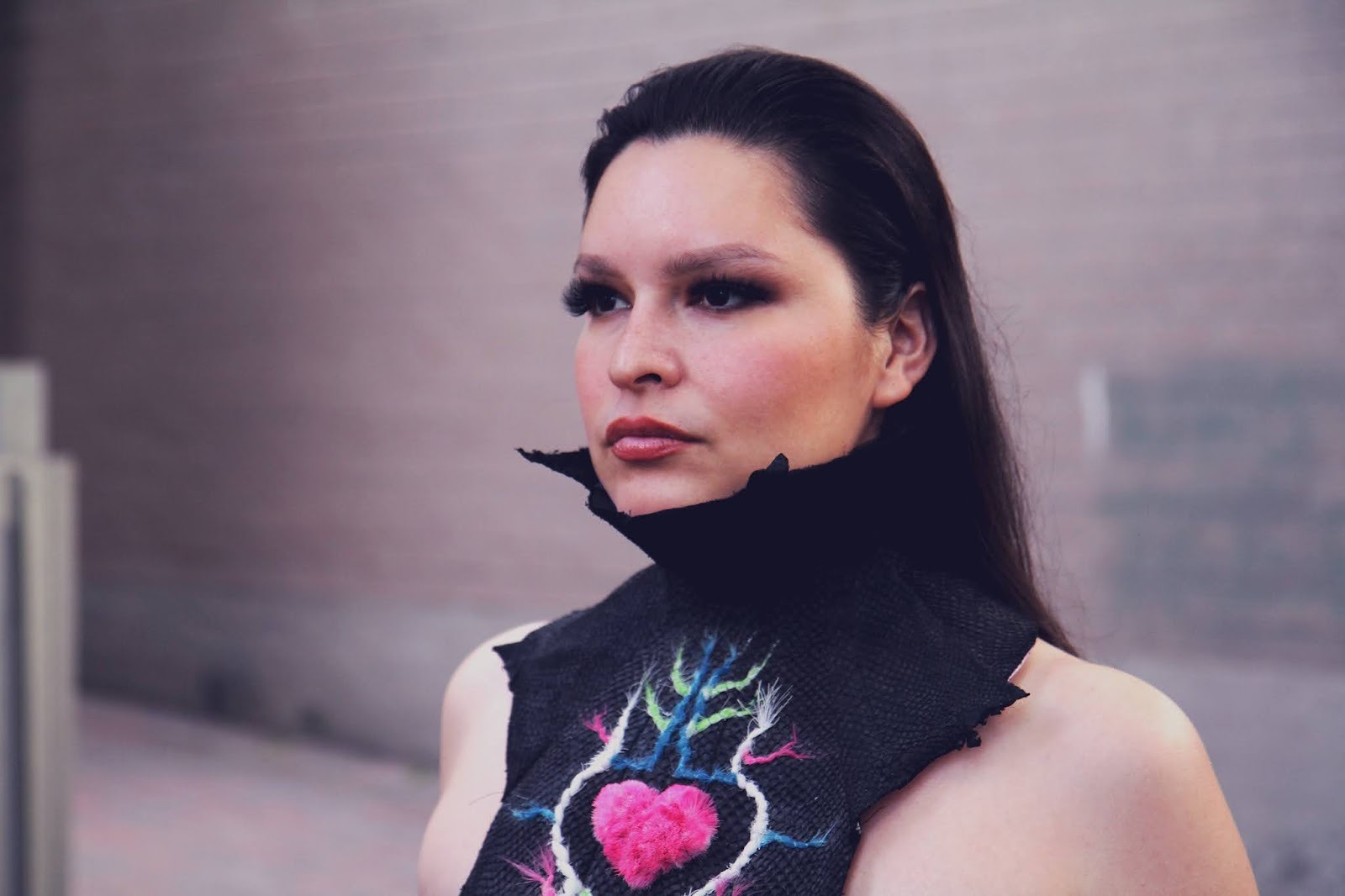
Source: Indigenous Fashion Week
Louise Solomon focuses on her identity as an “urban native” as someone who was raised in downtown Toronto. Her fine jewelry combines traditional elements of her culture with modern motifs, creating pieces with “biomechanical” looks, as she puts it. Her wolf collection in particular represents family, pride and resilience, themes she believes are important to instill in youth.
5. Lesley Hampton
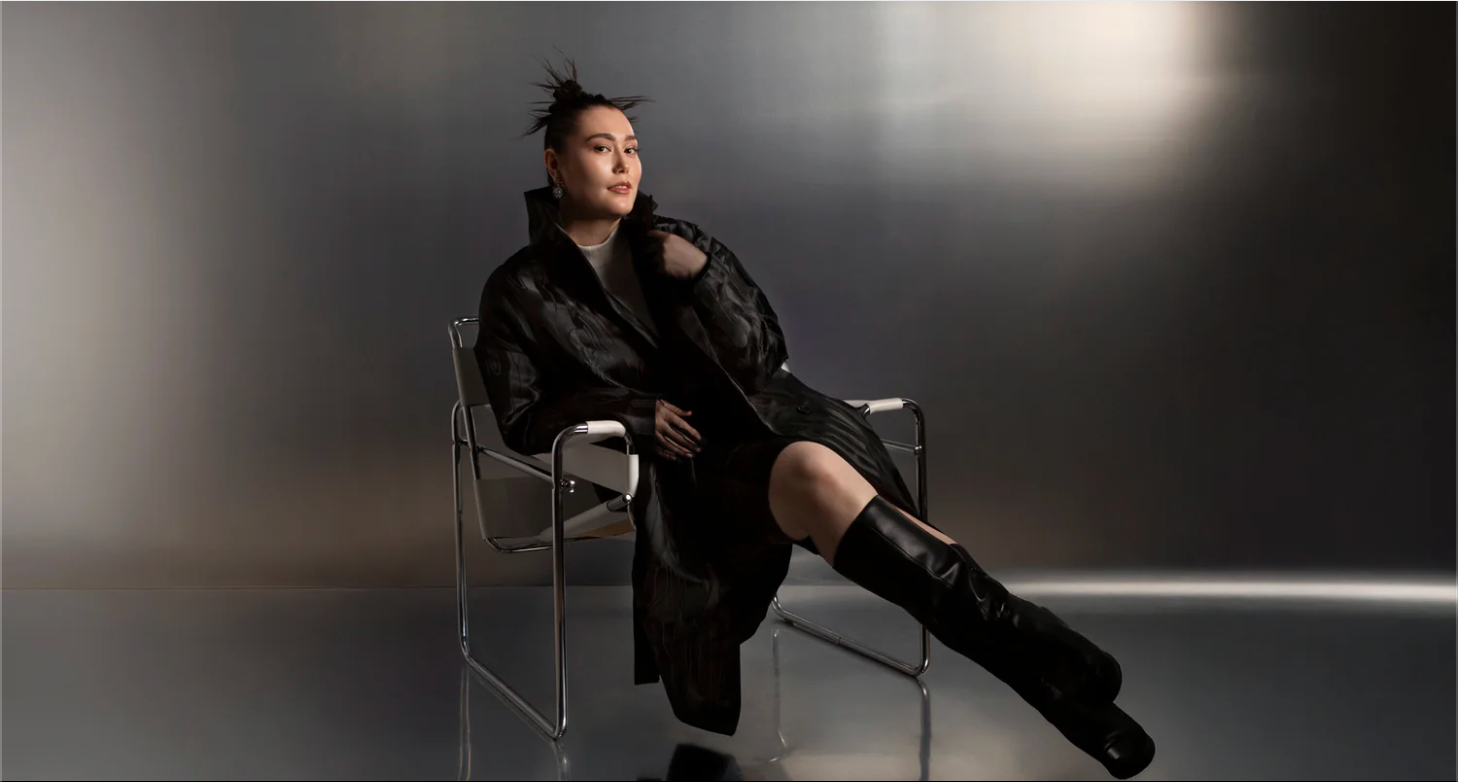
Source: Lesley Hampton
Lesley Hampton, winner of the 2021 Fashion Impact Award at the 2021 Canadian Arts & Fashion Awards, is known to combine indigeneity with evening wear and athleisure. Her work not only focuses on indigenous representation, but aims to change the way the world thinks about mental wellness and encourages body neutrality.
6. Jamie Okuma
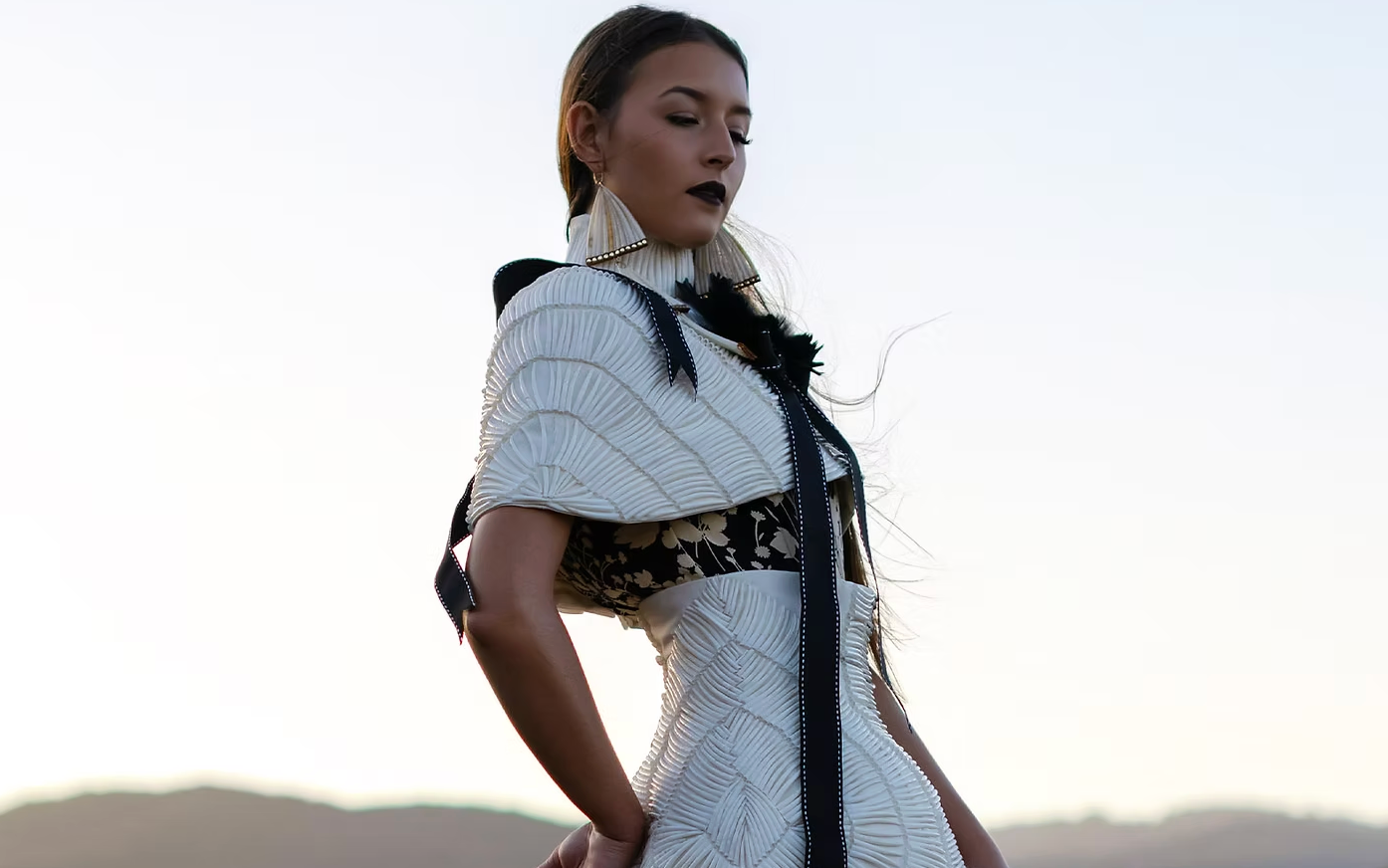
Source: Jamie Okuma
Jamie Okuma, based in the La Jolla Indian Reservation, was the first ever Native American to join The Council of Fashion Designers of America. Her fashion pieces also double as stand-alone artworks. She is known for adapting luxury brands into “indigenized” takes, such as her hand-beaded Christian Louboutin shoes. Her work is both tongue and cheek, performing a historical reversal by appropriating well-established Western fashion rather than the other way around, and breathtakingly beautiful.
7. Bethany Yellowtail
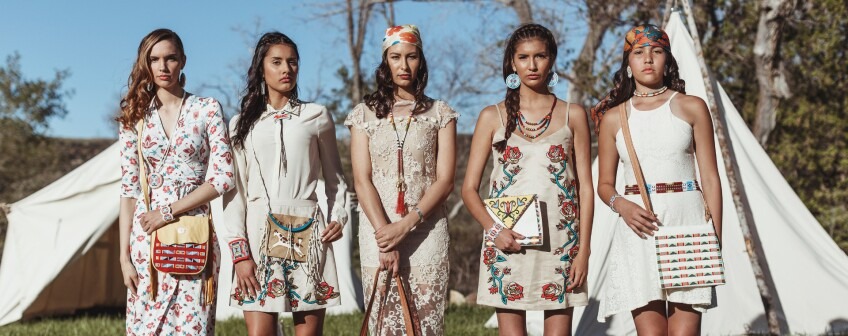
Source: PBS
Bethany Yellowtail, creator of the beloved namesake brand B.Yellowtail, is known for her combination of historical references and modernity. She has created pieces specifically for the Indigenous Women Rise: Women’s March and the Standing Rock Protests in 2017. She cites that her activism work is inspired by the activism of her ancestors, which is why she created a collection based on what Crow and Northern Cheyenne women wore during battle. She also created the B.Yellowtail Collective to support other indigenous artists and designers.
It’s important to note that this list of indigenous designers is just scratching the surface of the wide range of indigenous fashion. For example, these artists are located on the North American continent, but indigenous fashion is prominent all over the world.
How Can Non-Indigenous Consumers Support Indigenous Fashion Sovereignty?
Buy From Indigenous Designers
Many of the indigenous designers listed in this article are the proud owners of brands. If you find yourself in need of what they offer, and are in the financial stage to support them, we highly recommend you do so. More likely than not, you also have indigenous designers in your own community. It only takes a few seconds to find whose land you’re on, and based on what you find, you know who you can support.
Be Open to Learning
In addition to searching for knowledge online and discussing with your indigenous friends, a great way to understand indigenous fashion is to see it with your own eyes. We recommend attending exhibitions. From now until June 2026, The Autry Museum in Los Angeles is showcasing an exhibit titled Future Imaginaries: Indigenous Art, Fashion, Technology. The Textile Museum of Canada is also a great place to see indigenous designs in person, and right now, they have a blog series titled Sovereignty Style, where they give the floor to Indigenous fashion artists and designers to tell their stories.
In sum, there are numerous indigenous fashion designers to check out, all with different works and practices. They’ve been here since the beginning, but their presence is only getting stronger.




.png)
.png)
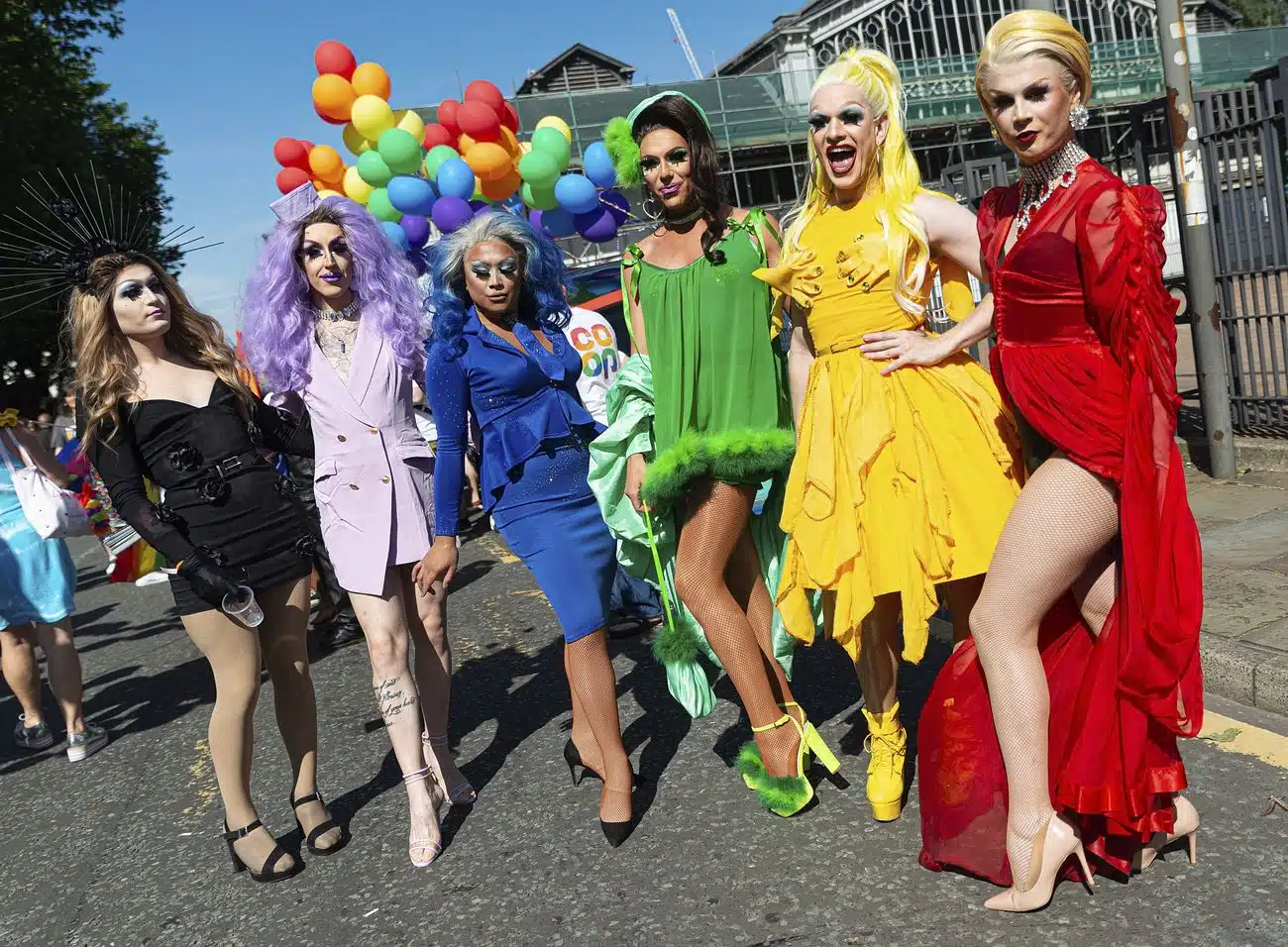
.png)